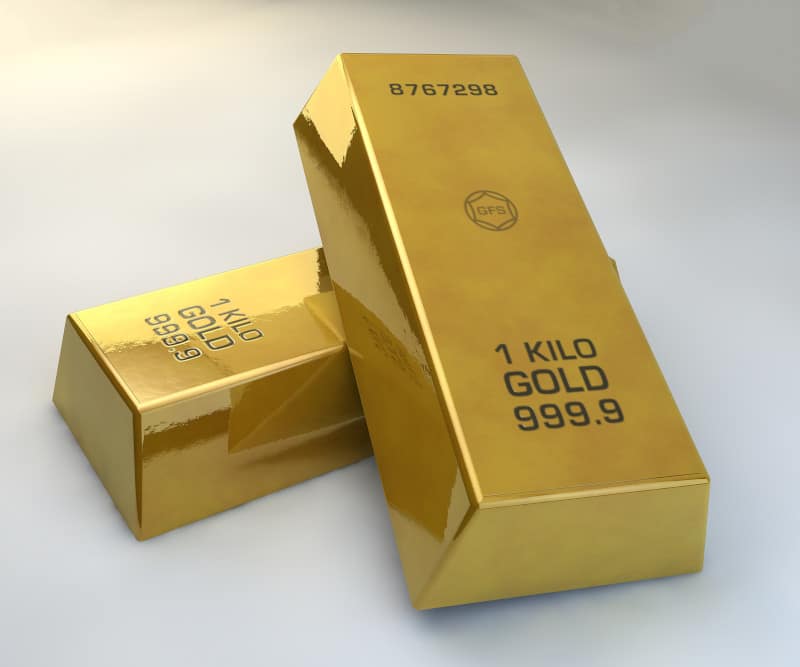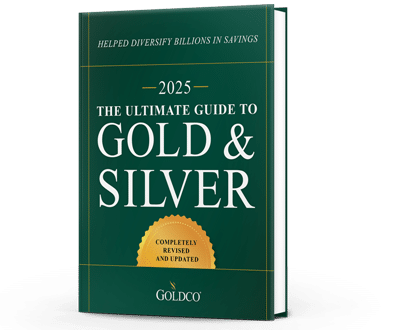A Few Ways to Tell If Gold Is Real
With gold recently reaching all-time highs, interest in the yellow metal remains strong But for many people who may be buying physical gold for the first time, they may be leery of buying gold if...
Precious Metals

On August 1st, President Trump announced a series of tariffs that would be implemented on imports from numerous different countries. Among those countries now subject to tariffs is Switzerland, with imports of Swiss goods now facing a 39% tariff rate.
While having to pay more for your Swiss watches and Swiss chocolates might be painful, there’s one other Swiss export that will also be subject to tariffs now: gold.
If you think this isn’t anything to worry about because there’s plenty of gold in the US already, think again.
Switzerland is a major hub of the gold trade, home to major gold refiners, and it supplies many of the gold bars that are preferred in the gold trade, particularly the 1-kilo gold bars that are preferred for trading on New York exchanges.
Swiss exporters had previously expected that their gold exports wouldn’t be subject to the new tariffs, but a new letter from the Trump administration specifically stated that these gold bars would now be subject to tariffs, specifically stating the customs code under which they are to be classified.
So how might this impact you?

Well, if you’re looking at buying gold, the cost of your finished gold products (coins, smaller bars, jewelry, etc.) could end up rising significantly.
A nearly 40% increase in the cost of imported gold isn’t anything to sneeze at. And while too many Americans don’t understand how tariffs work, the reality is that the tariffs are a tax paid by Americans.
Swiss exporters aren’t paying these tariffs, it’s the American companies that are paying tariffs on the gold bars when they import them. And those costs will then get passed on to consumers.
Gold products are sometimes sold with small margins, with gold dealers relying on sales volume to drive profits. So a 39% tariff isn’t something that anyone in the gold supply chain can eat, it will get passed on to the individuals who end up buying gold products.
Will this have an immediate effect on gold trading? Well, gold futures are already up significantly, trading at a premium of over $100 higher than the spot price.
But US firms imported huge amounts of gold earlier in the year, when President Trump first announced his tariffs, so that they could front-run any potential tariff-related price increases.
With so much gold having been imported ahead of any potential tariffs, there’s likely enough supply for now that markets should be able to operate for a while. But eventually that gold will likely be sold or used to manufacture coins and jewelry, and markets will demand new gold bars.
Will they continue getting them from Switzerland? Will they be able to find new sources of gold that aren’t subject to such high tariffs? That remains to be seen.
This isn’t just going to impact Swiss refiners. All imports of 1-kilo and 100-ounce gold bars are subject to this ruling, no matter what their country of origin. So that means that all imports of these gold bars end up becoming subject to tariffs.
That could drive up the price of gold already here in the US too. After all, if the gold spot price is $3,400 an ounce, even a 10% tariff drives that up to nearly $3,800 an ounce. The incentive then would be for sellers of gold already here to boost their prices too, as selling gold at $3,700 would provide a discount to imports while still making a big profit over the spot price.
That could certainly benefit existing gold owners, but it would make it far more expensive for any new buyers of gold. And if you had been hoping to buy gold but couldn’t pull the trigger before these tariffs take effect, you could be out of luck.
Gold market experts are hoping that this might be an error, while still preparing for the worst, with Ross Norman of Metals Daily stating that these tariffs are “akin to pouring sand into an otherwise well-functioning engine.”
President Trump stated on August 11th that gold would not be subject to tariffs, but until an executive order comes out clarifying what is really the case, gold markets could remain in a state of heightened uncertainty. So now may be the time to start looking at buying gold, before further turmoil roils gold markets.
More and more Americans today are looking at safe haven assets like gold to help protect their financial well-being in the face of stiff inflation and fears of a potential recession. Gold has served as a safe haven asset for centuries, and safe haven demand for gold remains strong today.
One way that you can take advantage of gold’s safe haven abilities is buying gold with a gold IRA, which allows you to own physical gold coins or gold bars within an IRA account, giving you the safe haven status of gold along with the tax advantages of an IRA account.
Gold IRAs can be funded with rollovers or transfers from existing retirement accounts, such as 401(k), 403(b), TSP, IRA, and similar accounts. In many cases these rollovers can be done tax-free.
Goldco has helped thousands of Americans benefit from owning precious metals like gold and silver, and our specialists can answer any questions you may have about the gold buying process. With tariff uncertainty starting to cloud gold markets, now is the time to start thinking about whether gold is right for you.
Don’t wait until prices jump before you make a move. Call Goldco today to learn more about all the gold buying options available to you.

